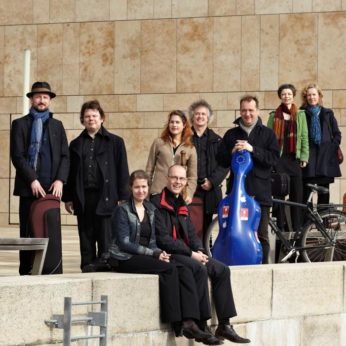Composer: Jean Baptiste Lully (b. 1665 - d. 1743)
Performance date: 06/07/2016
Venue: St. Brendan’s Church
Composition Year: 1685
Duration: 05:55:00
Recording Engineer: Richard McCullough, RTÉ lyric fm
Instrumentation Category:Large Mixed Ensemble
Instrumentation Other: 3vn, va, vc, rec, db, lute, hpd, ob
Artists:
Concerto Copenhagen (Antoine Toruncyzk [oboe], Fredrik From, Peter Spissky, Antina Hugosson [violins], Torbjörn Köhl [viola], Judith-Maria Blomsterberg [cello], Kate Hearne [cello, recorder], Marrias Frostenson [bass], Fredrik Bock [theorbo], Marcus Mohlin [harpsichord]) -
[baroque ensemble]

Jean-Baptiste Lully, originally Giovanni Battista Lully was a French composer of Italian birth, who spent most of his life in the service of the Court of Louis XIV of France. His music is known for its power, lively fast movements and deep emotional slow movements. Some of his most popular works are his passacaille and chaconnes. Le Temple de la paix is the last court ballet of Lully and librettist Phillipe Quinault and was first performed at Fontainebleau in 1685. The plot is made up of similar elements to that of Roland, which premiered in the same year. Both works are celebrating the expanding influence of France and Louis XIV, Temple de la Paix celebrates the peace established by the Treaty of Regensburg signed in August 1684. Chaconnes were often performed by foreign or colonial characters in Lully’s theatrical works and had exotic and often erotic associations. In Temple de la Paix the chaconne is the closing dance of the ballet and is danced by les Africainnes et les Africains. The dancers are celebrating peace and happily paying homage to the renowned King, they are the last in a series of nations to come from all corners of the earth to the temple of peace to give praise to Louis for his victory and worthiness. Lully invokes the chaconne to represent the exoticism of the Africans whom, according to the French, are the originators of the dance.
Copyright © 2024 West Cork Music. All rights reserved.
Designed and developed by Matrix Internet